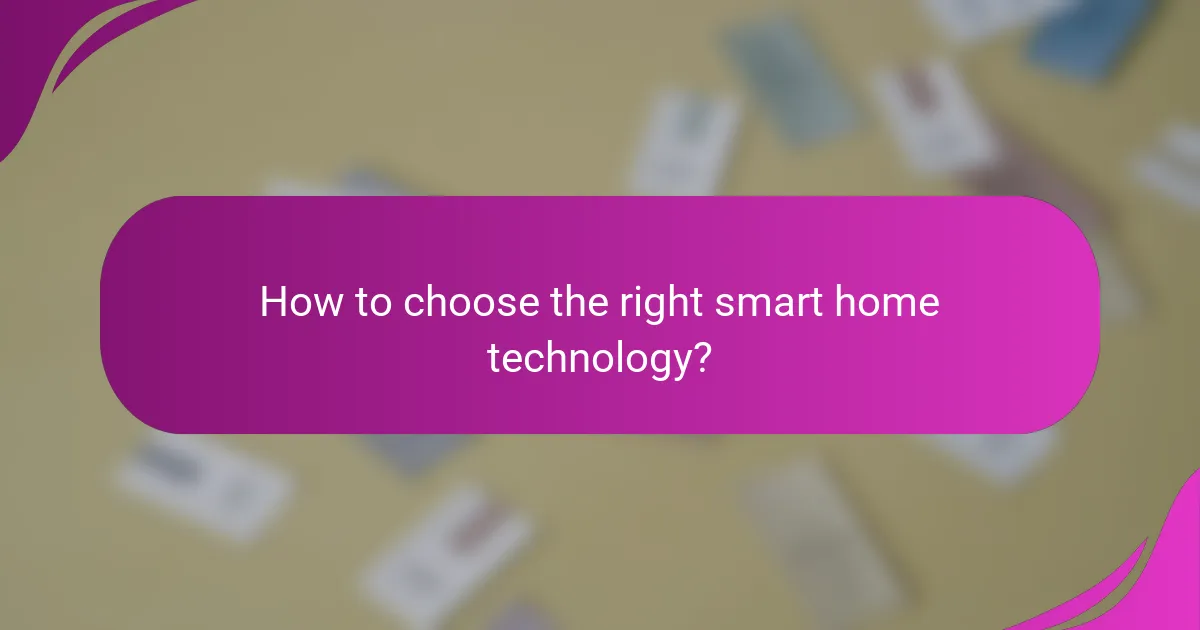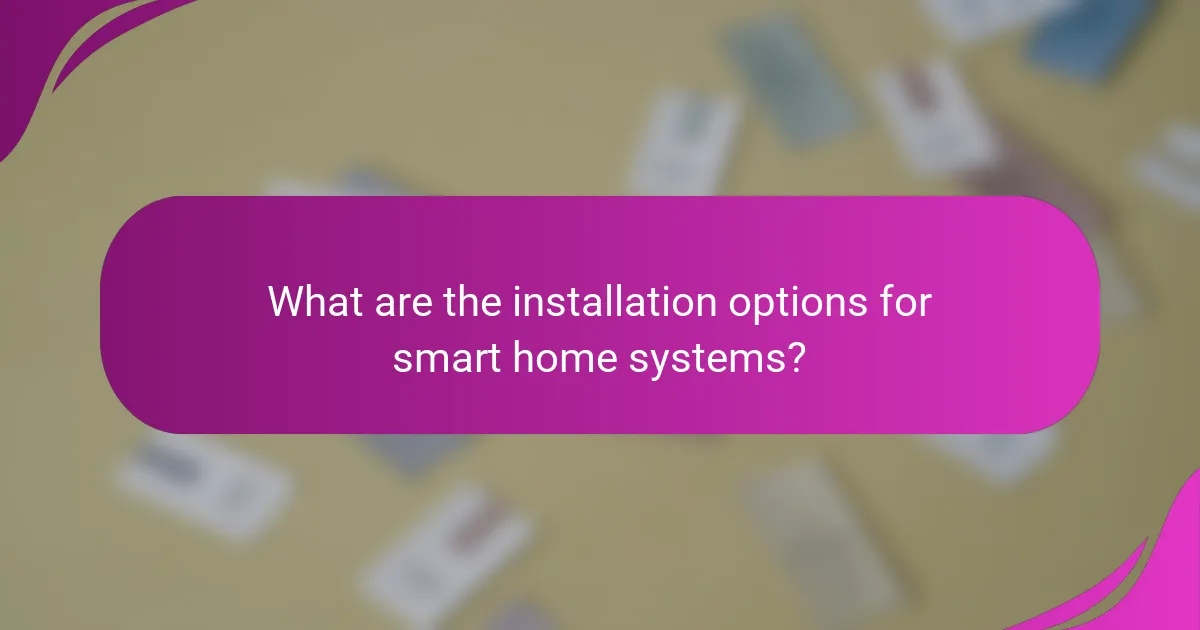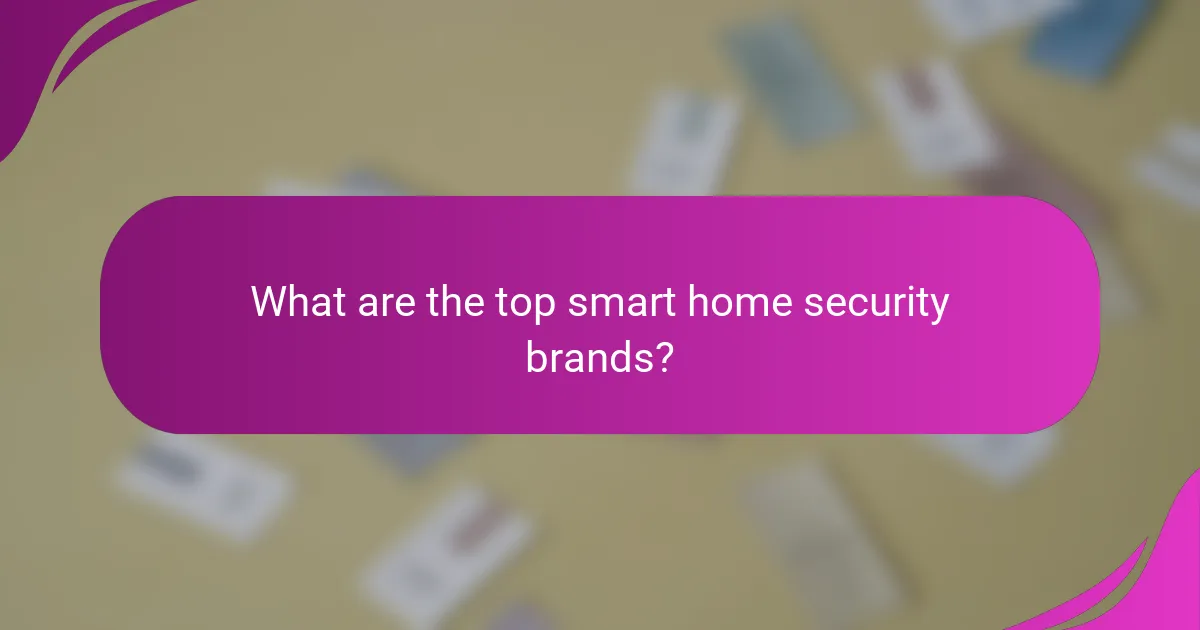Smart home technologies are revolutionizing the way we interact with our living spaces by offering automation, enhanced security, and improved energy efficiency. Leading platforms like Amazon Alexa, Google Nest, and Apple HomeKit enable seamless control of devices, while advanced security features provide real-time monitoring and alerts. Additionally, these systems help optimize energy consumption, resulting in lower utility bills and a reduced environmental impact.

What are the best smart home automation systems in the US?
The best smart home automation systems in the US include Amazon Alexa, Google Nest, Apple HomeKit, Samsung SmartThings, and Wink Hub. These platforms offer various features for controlling devices, enhancing security, and improving energy efficiency in homes.
Amazon Alexa
Amazon Alexa is a voice-activated smart home assistant that integrates with a wide range of devices. It allows users to control lights, thermostats, and security systems through voice commands or the Alexa app.
Consider compatibility when choosing Alexa-compatible devices, as not all smart devices work seamlessly with it. Popular options include Philips Hue lights and Ring security cameras, which enhance both convenience and security.
Google Nest
Google Nest offers a comprehensive ecosystem for home automation, focusing on user-friendly interfaces and integration with Google Assistant. This system allows for voice control and automation of various smart devices, including cameras and smart speakers.
When using Google Nest, take advantage of its learning capabilities, which can optimize energy use based on your habits. Devices like the Nest Learning Thermostat can help reduce energy bills by adjusting temperatures automatically.
Apple HomeKit
Apple HomeKit is designed for users within the Apple ecosystem, providing a secure platform for controlling smart devices via iPhone, iPad, or Apple Watch. It emphasizes privacy and security, making it a preferred choice for Apple users.
HomeKit supports a variety of devices, including smart locks and lights. Ensure that any device you purchase is labeled as “Works with Apple HomeKit” to guarantee compatibility and ease of use.
Samsung SmartThings
Samsung SmartThings is a versatile smart home hub that connects a wide array of devices from different manufacturers. It allows users to create custom automations and routines for their smart home setup.
SmartThings is particularly beneficial for users with a mix of brands, as it supports Zigbee and Z-Wave protocols. This flexibility can simplify the management of various devices, from sensors to smart appliances.
Wink Hub
Wink Hub is another smart home platform that supports multiple protocols, making it compatible with a variety of devices. It provides a straightforward app interface for managing home automation tasks.
While Wink Hub is user-friendly, consider that its subscription model may incur ongoing costs for certain features. Evaluate your needs to determine if the benefits outweigh the expenses for your smart home setup.

How can smart home technologies enhance security?
Smart home technologies significantly enhance security by integrating advanced devices that monitor and control access to your home. These systems provide real-time alerts, remote monitoring, and automated responses to potential threats, making it easier to protect your property and loved ones.
Smart locks
Smart locks allow you to control access to your home remotely, providing convenience and security. You can lock or unlock your door using a smartphone app, set temporary access codes for guests, and receive notifications when someone enters or exits your home.
When choosing a smart lock, consider compatibility with your existing door hardware and whether it offers features like keyless entry or integration with other smart home devices. Look for models that have strong encryption and are resistant to tampering.
Security cameras
Security cameras provide visual monitoring of your property and can be accessed remotely via smartphone or computer. They often come with features like motion detection, night vision, and two-way audio, allowing you to interact with visitors or deter intruders.
For effective surveillance, position cameras at entry points and high-traffic areas. Ensure they have adequate resolution and storage options, such as cloud or local storage. Regularly check for software updates to maintain security and functionality.
Alarm systems
Alarm systems serve as a deterrent against intruders and can alert you and authorities in case of a breach. Many modern systems are wireless and can be monitored and controlled through a mobile app, providing flexibility and ease of use.
When selecting an alarm system, consider features like motion sensors, window and door sensors, and integration with other smart devices. Look for systems that offer professional monitoring services for added peace of mind, and ensure they comply with local regulations regarding alarm usage and response.

What are the energy efficiency benefits of smart home devices?
Smart home devices significantly enhance energy efficiency by optimizing the use of energy in daily activities. They allow homeowners to monitor and control energy consumption, leading to reduced utility bills and a smaller carbon footprint.
Smart thermostats
Smart thermostats automatically adjust heating and cooling settings based on your habits and preferences, which can lead to substantial energy savings. For instance, they can lower the temperature when no one is home and warm it up before you return, ensuring comfort without wasting energy.
When selecting a smart thermostat, look for features like geofencing, which uses your smartphone’s location to adjust settings, and learning capabilities that adapt to your schedule. Many models can save users around 10-15% on heating and cooling costs annually.
Energy monitoring systems
Energy monitoring systems provide real-time insights into your household’s energy consumption, allowing you to identify high-usage appliances and behaviors. By tracking usage patterns, you can make informed decisions about when and how to use energy more efficiently.
Consider systems that offer alerts for unusual consumption spikes or provide historical data comparisons. These tools can help you reduce energy waste, potentially saving you 5-10% on your energy bills.
Smart lighting solutions
Smart lighting solutions, such as LED bulbs controlled by apps or voice commands, can significantly reduce energy use compared to traditional lighting. They allow for scheduling, dimming, and remote control, which helps ensure lights are only on when needed.
Using smart lighting can lead to energy savings of up to 80% compared to incandescent bulbs. When implementing these solutions, focus on replacing high-use fixtures first and consider integrating motion sensors to automatically turn lights off in unoccupied rooms.

How to choose the right smart home technology?
Choosing the right smart home technology involves assessing compatibility with existing devices, evaluating the user interface for ease of use, and considering your budget. Each of these factors plays a crucial role in ensuring a seamless integration into your home environment.
Assessing compatibility
Compatibility is essential when selecting smart home technologies, as not all devices work together. Check if the products you are interested in are compatible with your current systems, such as Wi-Fi networks, smart assistants, or hubs.
Look for devices that support common standards like Zigbee, Z-Wave, or Wi-Fi. This ensures that you can easily integrate new devices into your existing setup without major issues.
Evaluating user interface
The user interface of smart home technology should be intuitive and user-friendly. A complicated interface can lead to frustration and decreased usage of the devices.
Consider testing the app or control system before purchasing. Look for features like voice control, mobile access, and easy navigation to enhance your experience.
Considering budget
Your budget will significantly influence your choice of smart home technology. Prices can vary widely, from affordable devices in the low tens of USD to high-end systems costing several hundred USD.
Determine what features are essential for your needs and prioritize spending on those. Avoid overspending on unnecessary features that may not enhance your overall experience.

What are the installation options for smart home systems?
Smart home systems can be installed through various methods, including professional, DIY, and hybrid options. Each method has its own advantages and considerations, depending on your technical skills, budget, and the complexity of the system.
Professional installation
Professional installation involves hiring experts to set up your smart home system. This option is ideal for complex systems requiring extensive wiring or integration with existing home infrastructure. Professionals can ensure that devices are correctly configured and optimized for performance.
When choosing professional installation, consider factors like cost, which can range from a few hundred to several thousand dollars depending on the system’s complexity. Always check reviews and credentials to ensure you hire a reputable service.
DIY installation
DIY installation allows homeowners to set up smart home devices on their own, often using user-friendly apps and guides. This option is typically more cost-effective, as it eliminates labor costs, and many devices are designed for easy self-installation.
However, DIY installation may require some technical knowledge, particularly for more advanced systems. It’s essential to read instructions carefully and ensure compatibility between devices. Common pitfalls include overlooking network requirements or failing to secure devices properly.
Hybrid installation
Hybrid installation combines elements of both professional and DIY approaches. Homeowners may install simpler devices themselves while hiring professionals for more complex components. This method offers flexibility and can help manage costs effectively.
When considering hybrid installation, assess which parts of the system you feel comfortable installing. For example, you might set up smart bulbs and plugs on your own but seek professional help for a smart thermostat or security system. This approach can balance convenience and cost while ensuring optimal performance.

What are the top smart home security brands?
The leading smart home security brands include Ring, Arlo, and Nest. These companies offer a range of products designed to enhance home security through technology, providing features like video surveillance, motion detection, and smart alerts.
Ring
Ring is well-known for its video doorbells and security cameras. Their devices allow homeowners to monitor their property remotely via smartphone apps, making it easy to respond to visitors or potential intruders in real-time.
Consider the subscription plans for cloud storage, which can vary in price. Basic plans start at around $3 per month, while more comprehensive options may cost up to $10 per month for additional features.
Arlo
Arlo specializes in high-definition security cameras with features like night vision and two-way audio. Their systems are wireless, making installation straightforward without the need for extensive wiring.
Arlo offers various subscription plans, with basic services starting at approximately $3 per month. Users should evaluate their storage needs, as higher-tier plans provide longer video retention times and advanced features.
Nest
Nest, part of Google, provides integrated security solutions that work seamlessly with other smart home devices. Their cameras and alarms can be controlled through the Google Home app, allowing for centralized management of home security.
Pricing for Nest products can be higher than some competitors, but the integration with Google services may justify the cost for many users. Subscription plans for additional features typically start around $6 per month.


